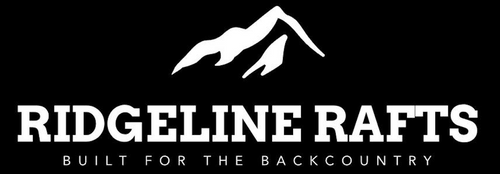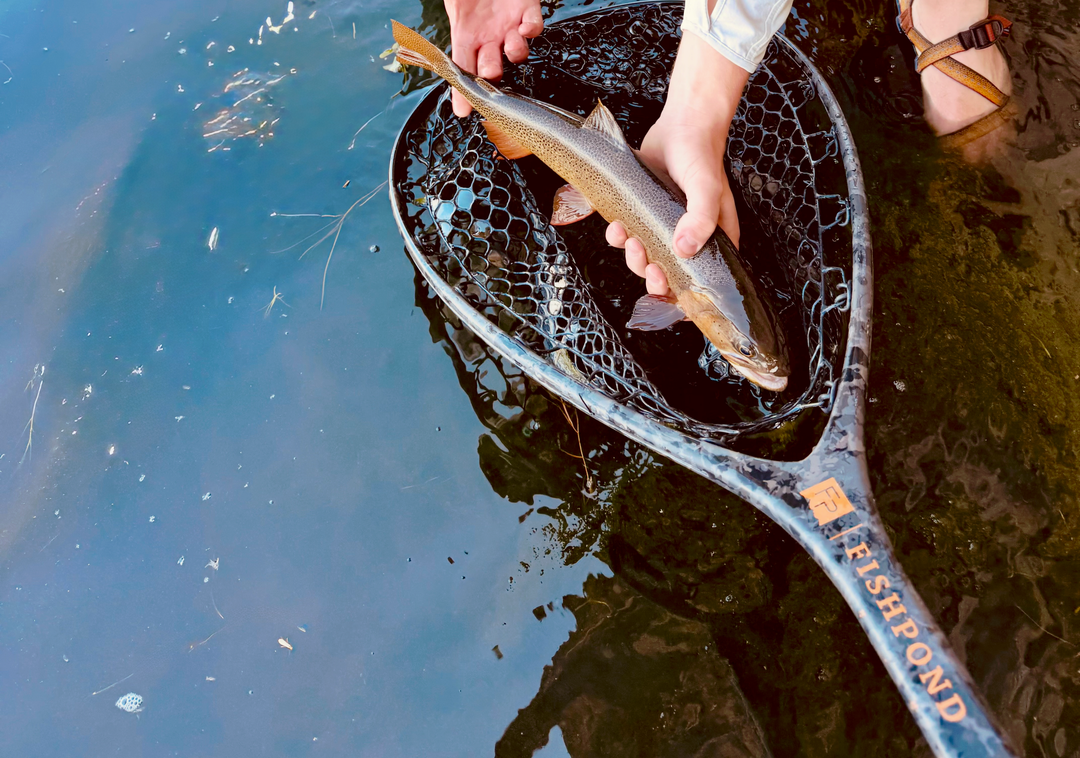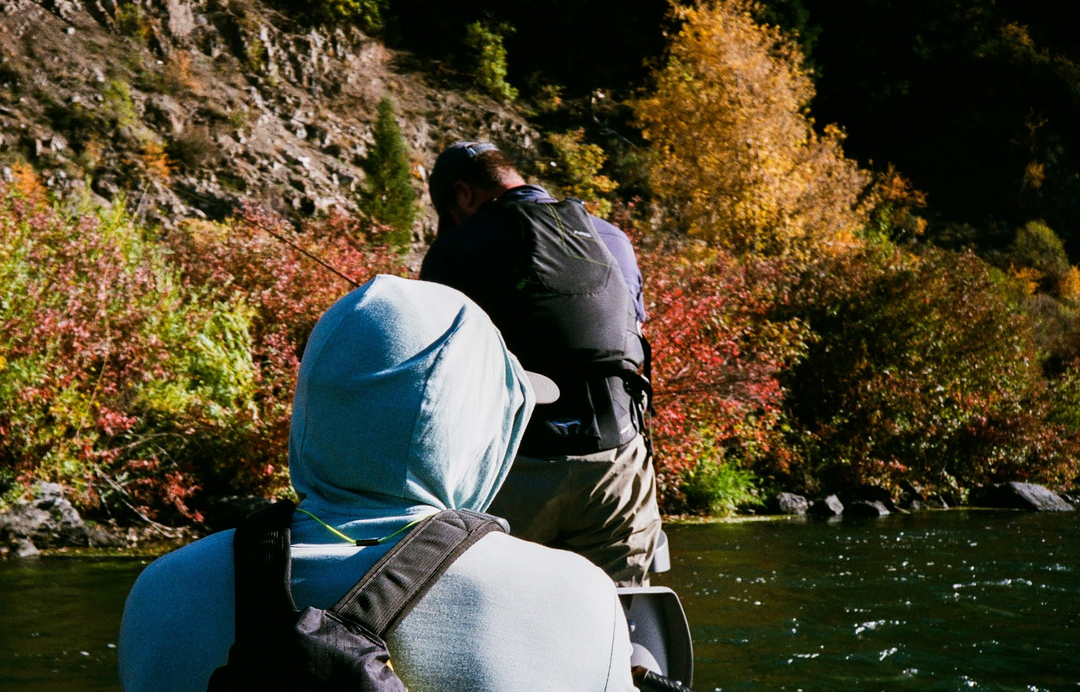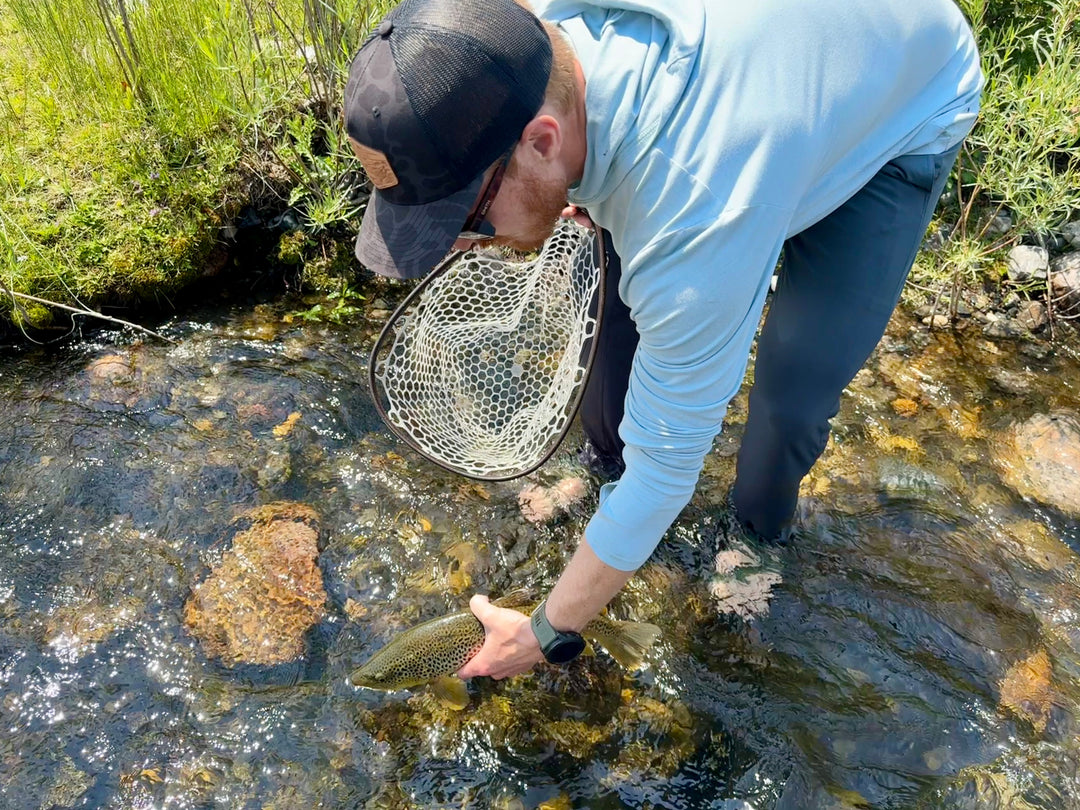The Silent Skill That Catches More Fish: Rowing

Most fishermen obsess over flies, new rods, or dialing in their own leader formulas — but often overlook one of single most underrated and critical piece of "equipment" when fishing from a boat: the person rowing the boat. Whether you're behind the oars or fishing from the front, how the boat moves determines how the fly fishes.
Rowing isn’t just about avoiding rocks or navigating the river — it’s about reading water, slowing things down, and putting anglers in the best possible position to succeed. Learn to row well, and you won’t just catch more fish — you’ll also become the one everyone wants to fish with.
Rowing Matters More Than You Think
Boats give you access to water most anglers never touch. Inflatable rafts go even further, reaching skinny side channels, technical water, and shallow riffles that heavier drift boats can’t. But access alone doesn’t catch fish — how you move through that water does.
Quality rowing can help you unlock all the potential in the water. The difference between floating past good water and fishing it well usually comes down to what’s happening on the oars. The rower can make water more fishable — or unfishable. That’s why rowing is one of the most underrated and important skills in fly fishing.
Rowing Isn’t Just Transportation — It’s Presentation
The foundation for every cast is shaped by the person on the oars. The right boat speed, angle to the bank, and distance from the target make the difference between a fly that drags awkwardly and one that drifts naturally into a feeding lane. That’s presentation — and it starts with the rower.
A good rower manages micro-adjustments constantly: holding a line with a crab row, gently correcting drift angle with the push of an oar, or keeping the boat slow enough for the angler to fully work a piece of structure. These decisions create time and opportunity — and the more time your fly spends in the strike zone, the more fish you’ll catch.
Position Is Everything: How Rowing Shapes Success

A great rower isn’t just getting the boat downstream — they’re setting up shots. Every cast depends on how the boat is positioned: the speed, the angle, and the distance to the target. Whether you’re working a grassy bank, drifting a bounce rig through a drop-off, or firing streamers tight to a logjam, the rower dictates how easy or difficult those casts and subsequent drifts will be.
Casting from the bow or stern can feel like two completely different games if the person rowing doesn’t understand how wind, sight lines, casting angles, and timing affect each angler. Good rowing brings clarity and control. Great rowing puts fish in the net.
Control the Boat, Control the Drift
Whether it’s a dry fly or nymph rig, a drag free drift is everything. And the drift is heavily influenced by the rower.
If the boat’s drifting too fast, pulling off-angle, or crowding the target, even the best casters will struggle. But with solid rowing — thoughtful adjustments, smart positioning, and good awareness of where the angler needs to be — every cast has a much better shot at being a productive one. This is particularly important around the speed of the boat. Most of the time you need to be slowing the boat down, but sometimes what's needed is a push to better match the speed of the drift and avoid drag.
It may not seem like a big deal in the moment, but when a rower adds just two extra feet of dead drift per cast, that can add up to hours of productive time on a full-day float.
More time in the strike zone = more fish in the net.
That holds true whether you're tossing meat, feeding dries, or dead-drifting nymphs. Each discipline demands a slightly different approach on the oars. Let's look at the core 3 more closely now.
Streamer Fishing: Control the Pace, Create the Opportunity
Streamer fishing puts the rower squarely in the MVP role. Big fish don’t give you many chances — the take usually comes in the first few strips. If the boat's moving too fast, the shot is blown before it even starts. A competent rower knows how to back-row to slow the pace and quarter the angle into structure allowing the fishermen to keep the fly in the strike zone.
This isn’t just about putting the boat near the target — it’s about creating the time and space for the angler to work the water. Especially when fishing tight to wood or undercut banks, slowing things down means more casts, better presentations, and more chances at that one big brown trout.
Dry Fly Fishing: Subtle Adjustments, Seamless Drifts
Rowing for dry flies is a finesse game. The right angle and speed let the fly drift naturally — the wrong one makes it skate or drag. Great dry fly rowing means reading water quickly, anticipating currents, and adjusting without disruption. A clean drift often comes down to one smooth pull or a gentle push on the sticks at just the right moment.
It's not about freezing the boat — it’s about letting the current do the work while staying just ahead of trouble. For a dry fly to feed perfectly, everything starts with the oars.
Nymphing: Stay Quiet, Stay True
Nymphing is the most forgiving typically, but still requires precision and a drag free drift. The boat doesn’t have to move as much — but what movement there is has to be right. Correct angles keep the flies in the strike zone longer, and the rower’s job is to control speed, and make subtle direction shifts to avoid drag.
Bounce rigs and indicators won’t fish properly if the boat is whipping back and forth. It’s the kind of rowing that looks simple but is harder than you expect — small corrections, steady hands, and keeping the flies floating naturally through every seam.
The Best Rowers are Typically the Best Anglers

When you've spent enough time around great fly fishermen you'll notice a common theme - that great rowers (for fly fishing specifically) are almost always equally as good, or better, fishermen. I've spent over a decade rock climbing and I can tell if someone is strong just by how they stand at the bottom of a boulder. I don't even need to see them climb to know they're good. It's the same way for other sports as well. By how seeing how someone approaches the tee in golf or how their warm up swing looks, an experienced golfer can make a strong guess someone's a shark without even seeing them hit a ball. Just watching someone row the boat and how they talk to the other person in the boat can be a dead give away that someone is super fishy.
Almost any person can catch fish, but catching trout (without even holding the rod) day in and day out is an impressive feat. One of the ways guides measure their skill is by how well their clients do. One of core reason that a lot of guides choose to guide from a boat instead of doing walk and wade trips is they can help influence and control their clients success more than if they were walk and wading - and they do it most of the time without the client even knowing they're doing it. This looks like a client throwing a bobber rig and not mending for the 400th time in the day and being able to make two quick back strokes to slow the boat down enough to keep the fly line from dragging and pulling those flies out of the strike zone. These small changes guides make with the boat make the client seem like they're doing all the work with rod in their hand, but the reality is the guide is dictating their success.
So if you and your fishing partner want to be better anglers and catch more fish - start fighting over who gets to row instead of fish. This is the guide's way and it's been wildly successful in producing quality fishermen for decades.
Seeing the River Like a Guide
Once you start rowing with this type of intention, you begin to see the river differently This is a core difference between casual anglers and guides. Guides notice holding water, feeding lanes, soft edges, submerged structure — all the little clues that help them understand how they need to row and where they need to put the boat to set their client up for success. All of which translates directly into better fishing instincts when they’re on holding a rod.
When you begin to think like a guide, approach water with more patience and precision, and pick it apart the way a guide would. This will enable you to provide a lot more support on your next adventure with your fishing buddies to get a fish in the net.
Hooking fish is fun, but "guiding" a friend into a fish is equally - if not more - rewarding.
Make the Most of the Fishing Boat You’re In
Smart rowers also know how to use a fishing boat itself to their advantage. It doesn't matter if you have a drift boat or an inflatable fishing boat, developing your skillset in the rowers seat will help you take full advantage of the benefits that fishing from a boat provides.
Also make sure you're taking advantage of the the inside of your boat as well. Well-placed gear and organized accessories make for clean casting platforms that reduce fly line snags and tangles. This good boat and gear management keeps things comfortable and functional — especially on long floats or multi-day missions.
Why Serious Anglers Choose Inflatable Boats

If you're investing in becoming a better rower, it makes sense to pair those skills with a boat that lets you do more. Drift boats are stout, reliable, and great for storage — which is why guides who float hundreds of days a year still use them. But the ability to access almost any location, control (ease of rowing), and versatility, feature rich inflatable rafts have major advantages.
They float higher, weigh less (often 200+ lbs lighter than an aluminum or fiberglass drift boat), and let you sneak into shallow side channels or narrow sections that would stop a drift boat cold. Their large durable tubes create stability and their rigid floors (feels like you're standing on wood) enables friends to stand and fish all day without issue.
They also operate in the waves of whitewater rapids (class 2+) far better than drift boats (a lot of iconic fishing streams across the world have multiple class 2+ rapids you will have to navigate if you want to fish them). Rafts are not just easier to row in rapids, they're also far more forgiving when you make mistake like hitting a rock - as the tubes will gently flex and form around the rock absorbing a lot of the impact.
Their portability and ease to transport — whether deflated and rolled into a pack bag, strapped to a roof rack or trailer, or carried to the stream — means you can access more water that others can’t.
There isn't a perfect boat that can do everything, but inflatable boats provide greater value for the majority of anglers. A lighter weight boat is easier to row. And easier rowing means more precise drifts, better access, and less fatigue by the end of the day.
Conclusion: Rowing Is the Skill That Changes Everything
Rowing may get you downstream, but great rowing is how you unlock more of the rivers you're already on, fish more effectively, and enjoy every part of the day. When you pair solid skills on the sticks with the right inflatable boat, you’ll be able to explore any stretch of water, cast from better positions, and extend your time in the strike zone with every drift.
Whether you’ve starting guiding, floating with family, or just sneaking off for some solo time away from houseguests who’ve worn out their welcome, rowing connects you to the water in a way no motor ever could. With the right setup — a solid raft, smart gear layout that fits your boat, and someone who knows how to row with intention — any fishing trip feels more dialed, more fun, and a whole lot more productive.
If you’re serious about fly fishing, get serious about rowing. Embrace the oars, and see just how much more your streams have to offer.




